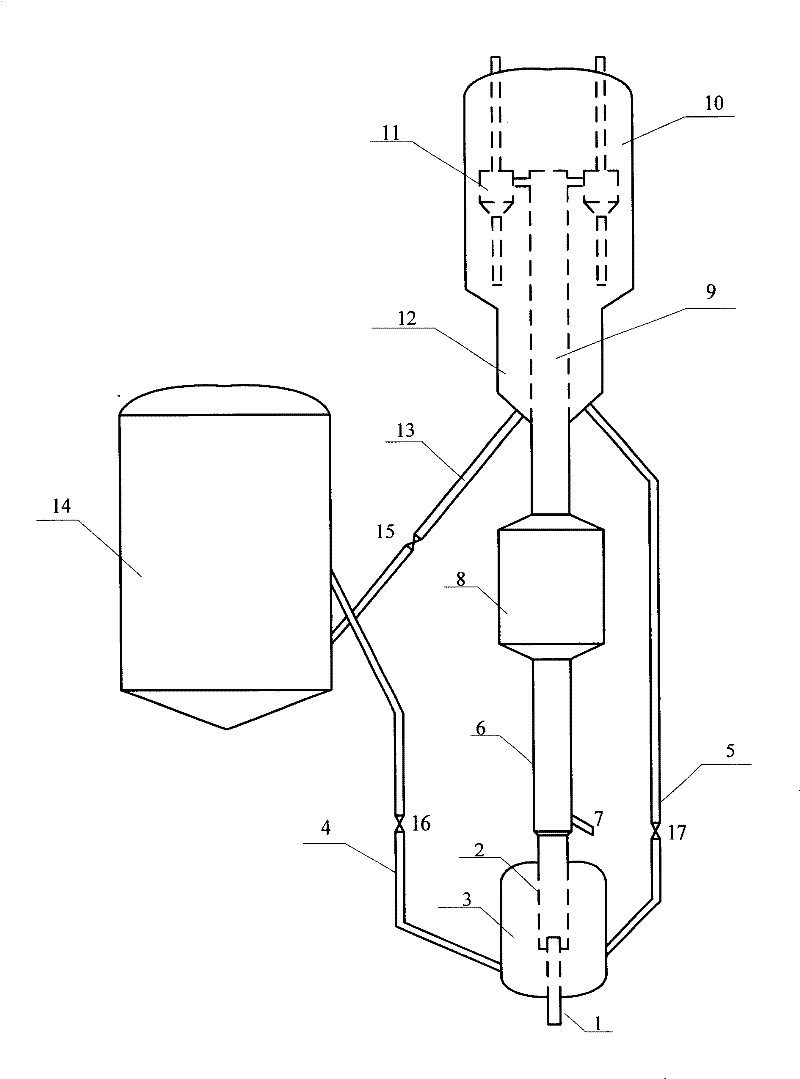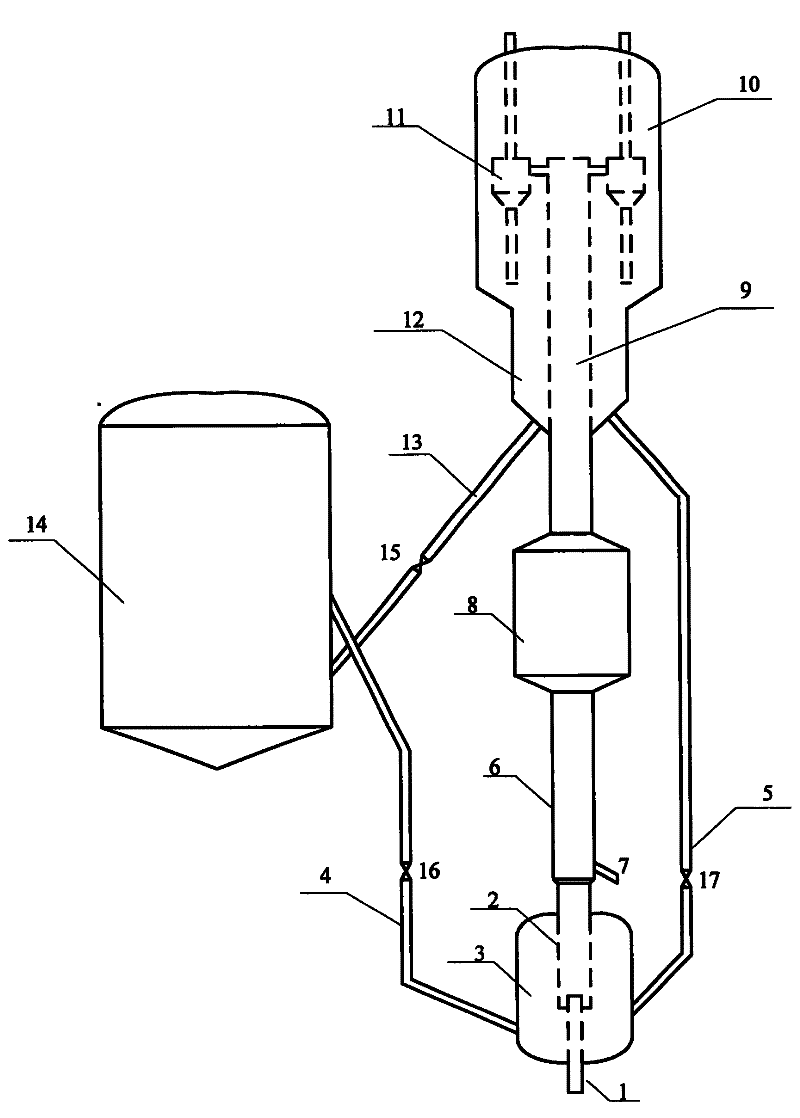Hydrocarbons catalytic conversion method for preparing low olefin-content gasoline
A catalytic conversion method and low-olefin technology, applied in the field of catalytic cracking, can solve problems such as temperature limitation at the outlet of the riser reactor, influence on the function of the second reaction zone, and limited catalyst circulation, so as to achieve reduced olefin content and low olefin content , the effect of reducing the proportion of thermal cracking
- Summary
- Abstract
- Description
- Claims
- Application Information
AI Technical Summary
Problems solved by technology
Method used
Image
Examples
Embodiment
[0027] This example illustrates the preparation of propylene by the catalytic conversion reaction of hydrocarbon oil using the method provided by the present invention.
[0028] The flow chart of the medium-sized catalytic cracking unit is shown in the attached figure. The vacuum gas oil is injected into the first reaction zone of the variable-diameter riser reactor through the pipeline 7, and the mixed catalyst lifted by water vapor contacts and reacts in the lower part of the first reaction zone. , the mixed catalyst is mixed in the mixing zone 3 by the 500°C carbon catalyst returned from the stripping section of the settler and the 680°C regenerated catalyst in a weight ratio of 0.15:1, and the bed density in the mixing zone is 200kg / m 3 . The weight ratio of catalyst and vacuum gas oil in the first reaction zone is 8.4:1, the residence time of vacuum gas oil in the first reaction zone is 1 second, the temperature in the first reaction zone is 520°C, and the oil mixture c...
PUM
| Property | Measurement | Unit |
|---|---|---|
| density | aaaaa | aaaaa |
| density | aaaaa | aaaaa |
| density | aaaaa | aaaaa |
Abstract
Description
Claims
Application Information
 Login to View More
Login to View More - R&D
- Intellectual Property
- Life Sciences
- Materials
- Tech Scout
- Unparalleled Data Quality
- Higher Quality Content
- 60% Fewer Hallucinations
Browse by: Latest US Patents, China's latest patents, Technical Efficacy Thesaurus, Application Domain, Technology Topic, Popular Technical Reports.
© 2025 PatSnap. All rights reserved.Legal|Privacy policy|Modern Slavery Act Transparency Statement|Sitemap|About US| Contact US: help@patsnap.com


